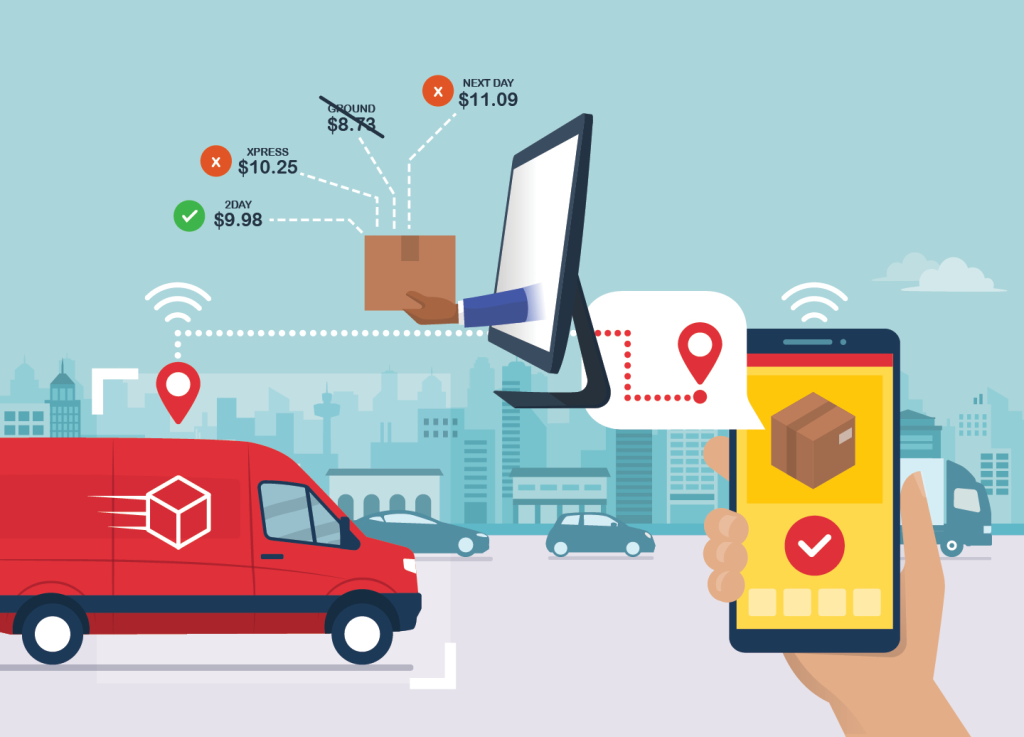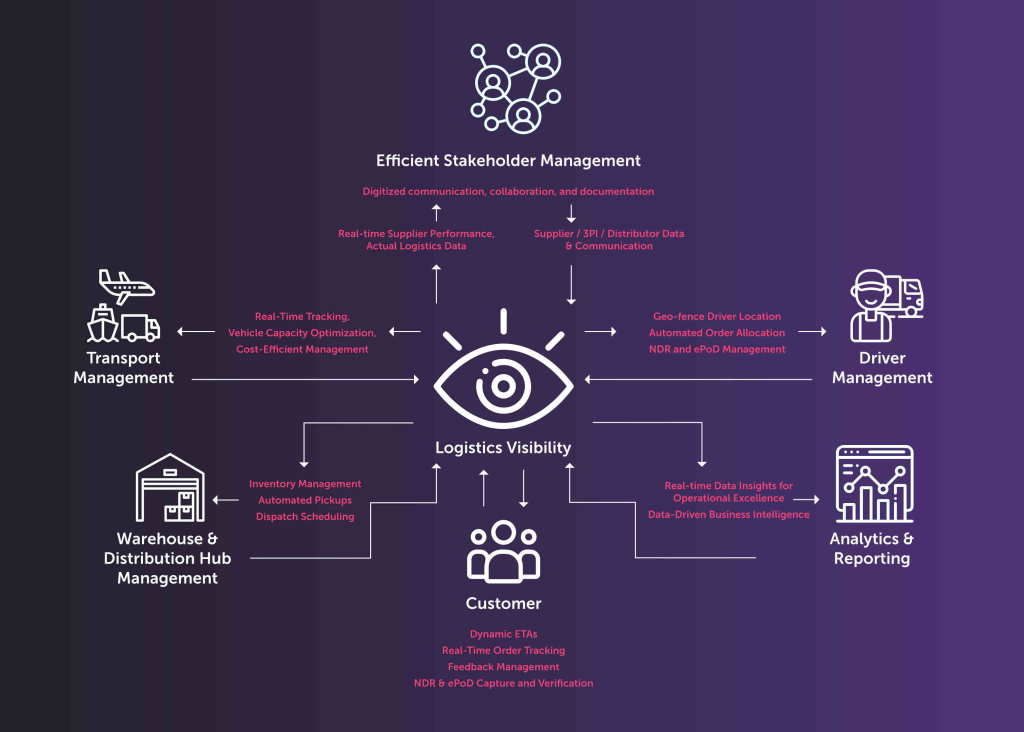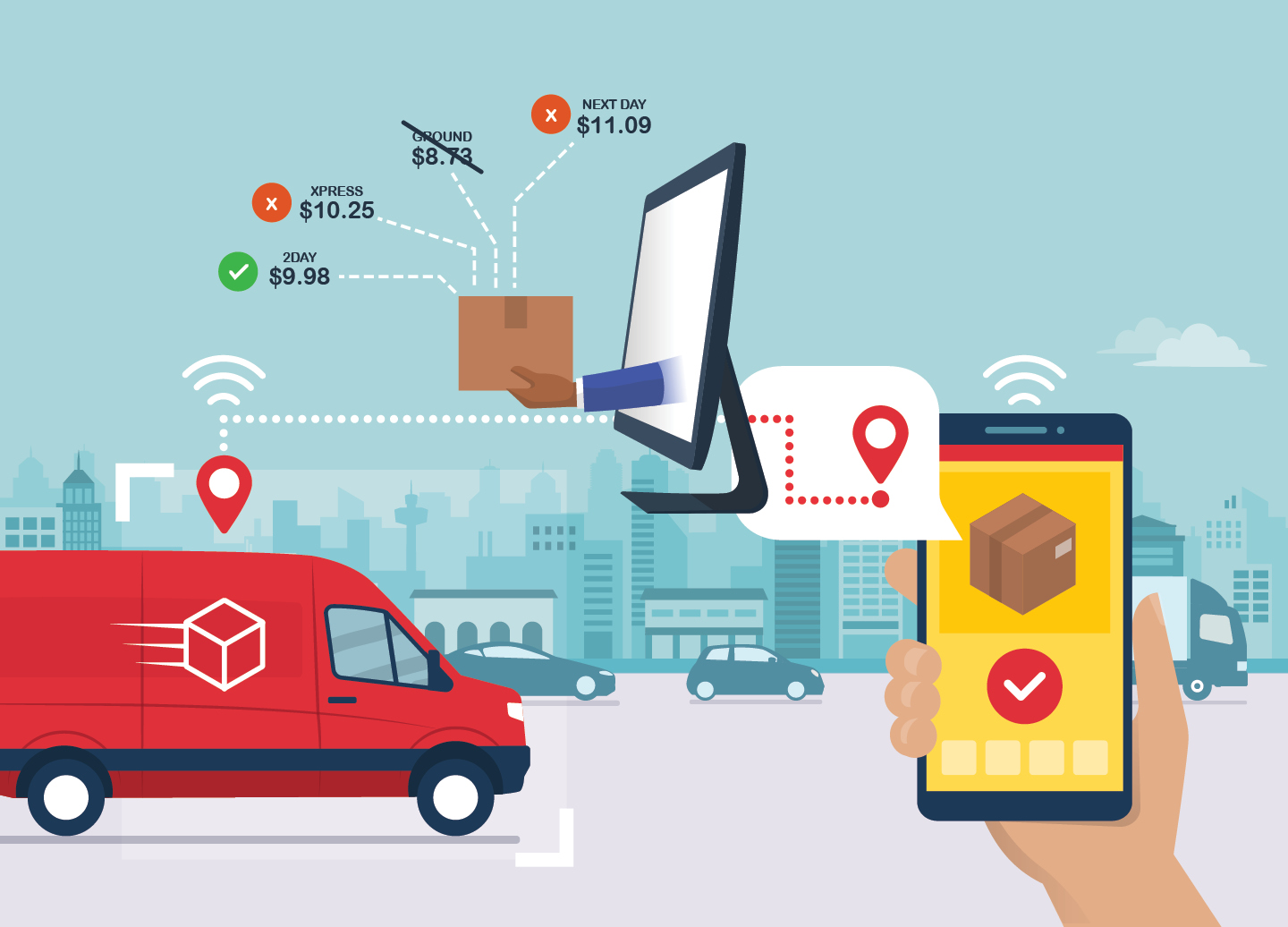The Role of Logistics Visibility in Multi-Carrier Shipping
In today’s fast-moving global supply chains, multi-carrier shipping has become a strategic necessity. Companies no longer rely on a single carrier to fulfill their delivery needs. Instead, they employ a diverse mix of national, regional, and specialized carriers to optimize cost, speed, and flexibility.However, this diversification introduces a new challenge—visibility. Without real-time, centralized tracking across all carriers, businesses risk delays, increased costs, and unsatisfied customers. This is where logistics visibility steps in as a crucial enabler of efficiency and performance.

What Is Logistics Visibility?
Logistics visibility refers to real-time tracking, monitoring, and managing shipments across the entire supply chain. It involves accessing data such as:
- Shipment location and status
- Estimated delivery times
- Exception alerts (e.g., delays, failed deliveries)
- Carrier-specific performance insights
When appropriately executed, logistics visibility empowers businesses with proactive control over their delivery networks and enhances decision-making across fulfillment, customer service, and operations.

Why Visibility Matters in a Multi-Carrier Environment
With multiple carriers involved, each using different systems and data formats, the lack of integration can lead to blind spots. These gaps affect performance in several key areas:
1. Customer Experience
Without accurate delivery updates, customers are left guessing about their orders. Visibility allows businesses to provide real-time tracking, automated notifications, and faster support response.
2. Operational Efficiency
A unified dashboard that aggregates data from all carriers simplifies logistics management. Teams can resolve exceptions quickly, reroute deliveries, and reduce manual communication with carriers.
3. Cost Optimization
Multi-carrier environments offer the flexibility to choose the most cost-effective option for each shipment. With complete visibility, logistics managers can compare carrier performance and costs and negotiate better rates based on data.
4. Risk Mitigation
From weather disruptions to customs delays, proactive alert systems help businesses respond to issues before they escalate, preventing missed SLAs and chargebacks.
Key Features of an Effective Visibility Platform
To make multi-carrier shipping successful, logistics visibility tools should offer the following:
- Carrier-Agnostic Integration: Support for national and regional carriers across various geographies
- Real-Time Tracking: Live updates and predictive ETAs
- Event-Based Alerts: Notifications for delays, exceptions, or delivery failures
- Analytics & Reporting: Dashboards for on-time performance, carrier comparisons, and delivery trends
- Customer-Facing Tools: Branded tracking pages and SMS/email notifications

Benefits for Different Stakeholders
| Stakeholder | Visibility Benefits |
|---|---|
| Logistics Teams | Real-time control, fewer manual tasks |
| Customer Support | Faster resolution, accurate updates |
| Customers | Transparent delivery, reduced “where is my order?” calls |
| Executives | Performance benchmarking, smarter cost decisions |
How to Implement Logistics Visibility in Multi-Carrier Shipping
- Choose a Visibility Platform: Look for solutions that integrate with your WMS, ERP, and all major carriers.
- Map Carrier APIs: Ensure carriers are connected via robust API or EDI integrations.
- Customize Alerts and Reports: Tailor the system to fit your operational workflow.
- Train Internal Teams: Ensure logistics and customer support understand how to use the platform effectively.
- Continuously Monitor & Optimize: Use historical data to adjust carrier selection and improve routing decisions.
Real-World Use Case: Multi-Region Retail Fulfillment
A global e-commerce brand shipping to North America, Europe, and Asia adopted a multi-carrier strategy to reduce transit times and costs. After implementing a visibility platform, they achieved:
- 35% fewer customer support inquiries
- 22% improvement in on-time delivery rate
- Better SLA compliance with 3PL and carrier partners
This illustrates how logistics visibility translates into both customer satisfaction and bottom-line improvements.
Conclusion
Logistics visibility is no longer optional in the complex landscape of modern fulfillment—it’s essential. Especially in a multi-carrier shipping setup, real-time insights ensure that businesses remain agile, customers stay informed, and operations run smoothly.
By investing in the right tools and processes, companies can turn visibility into a strategic asset that powers smarter shipping decisions and strengthens competitive advantage.
Industry Insights
news via inbox
Nulla turp dis cursus. Integer liberos euismod pretium faucibua








